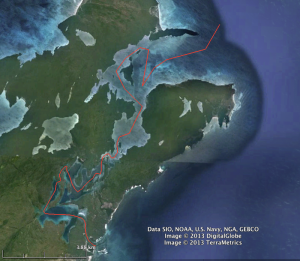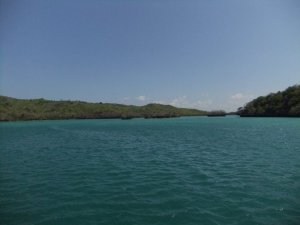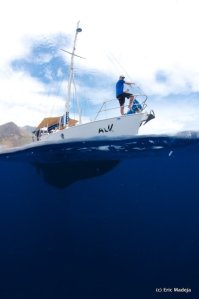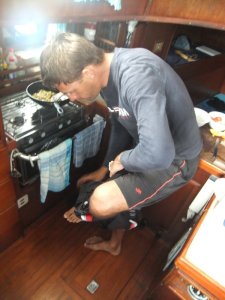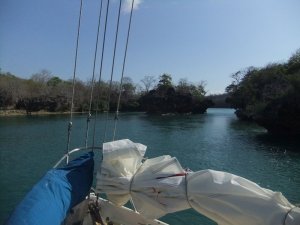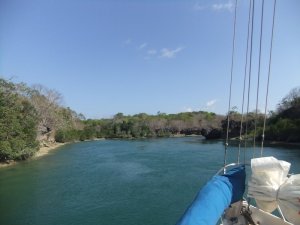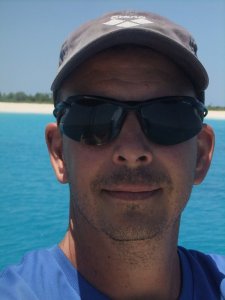I had to leave the boat in Dili and take a bus (12 hours of ass-breaking bumping) to Kupang for immigration reasons. When I rejoined ALK in Kupang we set off for the next island south – Pulau Rote. Rote is part of the proposed Savu Sea National Marine Park. It will be Southeast Asia’s biggest marine protected area when finally gazetted in the next few years. We had some intelligence from The Nature Conservancy about some good places to dive at the southern tip of the island. This is also the southernmost point of Indonesia. TNC also mentioned an area with some nice limestone islands in the middle of a channel at the north end of the island.
Eric voted against seeing the islands but Hans and I were interested so we ventured into the northern end of the bay to see what there was to see. The north wind was strong as we motored into the bay. At the deepest part of the bay we found a village that seemed to be straight out of the stone age. At that point we also realized that we had sailed into the middle of a seaweed farm and the farmers onshore were increasingly distressed as they rushed to their canoes to intercept us. Luckily Hans knows his craft well and we managed to get out of the maze of ropes without any casualties and went in search of a better channel.

A farmer tending his seaweed. The ropes are fastened to the bottom and floated with empty water bottles.
We kept probing deeper and deeper into the channel. Eric was on the mast scouting the channel ahead and I was on the bow relaying directions to Hans and watching for close rocks and coral heads. The straight kept narrowing down to less than 30 meters wide and then opening up into wide lagoons chock full of seaweed lines floating on the surface.
When we finally encountered some people further into one of the pools, Eric wanted to know if there are crocodiles in the area. The diving wouldn’t be great but it might make for a few interesting shots. Two guys approached in their canoe and were super friendly. According to those two guys, the crocs in the area are big but friendly and won’t bite. Eric was not convinced. Were there any sharks? “Yes. Big ones,” as our new friend held his hands about 2.5 feet apart. Eric still wasn’t convinced to get in the water. Our friends also gave some good intelligence on the way through the channel – “Go north and then turn sharp south.”
That was where it got REALLY narrow! But Hans knew his stuff and we went through some places where we had only feet on either side of the boat – and even in those narrow spots there were still seaweed lines to avoid!

We felt like the first modern sailboat to cruise through that strait. This was the narrowest point and we had no idea if we would get through
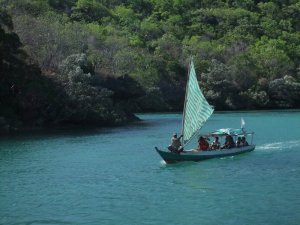
At the hairpin turn this boat came flying around the bend. 10 minutes earlier and we would have collided.
As we got through one particularly tight squeeze, a young seaweed farmer hailed us and asked for a lift. Of course we obliged and he paddled over and tied his little canoe to the boat and guided us through the next sections. Ganesh is a 19 year old seaweed farmer from the village at the end southern end of the channel. He has a wife (Estheri) and a 1 year old baby girl (Geisha) and makes a good living selling his produce. Ganesh guided us to the entrance of the channel to the Indian Ocean but we couldn’t clear the reef at low tide so we headed back into a protected lagoon to spend the night and wait for the next high water.


